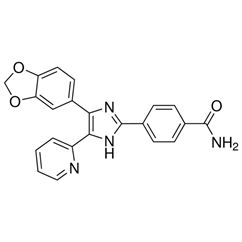OptiCol™ Human Collagen Type I (lyophilized), 15 mg
Description
OptiCol™ Human Collagen Type I is isolated from human neo-natal fibroblast cells. These cells are cultured in optimal conditions allowing these cells to naturally and efficiently secrete extracellular matrix which is processed and purified to produce human collagen. Manufactured under stringent quality standards with high lot-to-lot consistency. Made up of 97% Type I human collagen and 3% Type III collagen. OptiCol™ Human Collagen Type I exhibits high monomer content (as measured by gel permeation chromatography).
Applications
Tissue engineering research | Wound healing constructs | Coatings | Solid free-form fabrications | Electrospinning | in-vitro research | Nerve Repair, Hemostats, Sealants, Coils, Sponges, Spheres/Beads, Ligaments, Strings, Tubes/Cylinders, Films
Note: Lyophlilized form is not recommended for formation of a 3D gel
| Product Details | |
|---|---|
| Source | Human Neo-Natal Fibroblast Cells |
| Gelation Time | <90 mins |
| Fibril Formation | >0.5 abs. units |
| Purity | >99.9% |
| pH | approx 2 |
| Telo vs. Atelo | Atelo-collagen |
| Physical Appearance | Sterile filtered white lyophilized (freeze-dried) powder |
| Endotoxin Level | ≤1.00 EU/ml as measured by kinetic LAL |
| Sterilization Method | Filtration |
| Sterility | No growth |
| Cell Attachment Assay | Pass |
| Reconstitution | Dilute in 5 ml 0.01N HCl to yield 3 mg/ml solution |
| SDS-PAGE |
≥ 85% collagen contained within α, β, and γ bands; ≤ 15% collagen contained with bands traveling faster than α |
| Storage and Stability |
Lyophilized product is very stable at -20°C (recommended 24 months). Reconstituted material should be stored at 4°C and used within 3 months. |
Protocols
Coating Procedure
1. Remove required quantity of collagen from the bottle and dispense into a dilution vessel. 2. Dilute OptiCol™ collagen in water to ~50 to 100 μg/ml (~1:30). A 0.01 N HCl solution may also be used. 3. Swirl contents gently until material is completely mixed. 4. Add appropriate amount of diluted OptiCol™ collagen material to the culture surface ensuring that the entire surface is coated. 5. Incubate at room temperature or 37°C, covered, for 1 - 2 hours. 6. After incubation, aspirate any remaining material. 7. Rinse coated surfaces carefully with sterile medium or PBS, avoid scratching surfaces. 8. Coated surfaces are ready for use. They may also be stored at 2 - 10°C damp or air dried if sterility is maintained.







